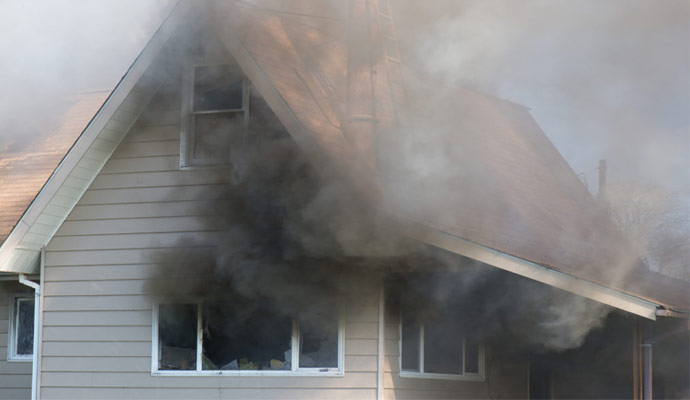“Following a devastating fire, Dayspring’s ability to pull resources from all over the state within hours was incredible. They had over 50 workers onsite within 2-3 hours! We would never have been able to have our students back in school within 2 days were it not for the quick response and the quality of work provided by them. Their quality of work was excellent!”
My House Is Full of Smoke Now What?

It’s late August and hopefully, the fire season is winding down. Regardless, the smoke in the air remains. Now that we are a few months into poor air quality, your home has had its share of damage. Dayspring Restoration knows fire restoration and the work it takes to restore your home from the smoke damage. Here are some tips on how you can clean-up your home:
- Removal of the soot is the key to odor control- microscopic smoke particles (soot) are the real cause of the smoky smell. Simply running an ozone generator, superficial cleaning, or application of odor masking agent, (like Febreze) will not fully remove the smoke smell.
- If you are going to run air conditioning or your furnace, install a high-efficiency, allergen removal filter. This will help to remove smoke from the air while the cleaning is in process.
- A full-detail clean is usually required to completely remove the smoke odor. This means that walls, ceilings, floors, furniture, cabinets, windows, doors, millwork…everything needs to be cleaned.
- If possible, use vacuums with HEPA filtration for your cleaning efforts. Vacuums without HEPA filtration simply spread contaminants.
- All clothing and bedding should be laundered. If these items are not considered, the soot that has settled on these items can re-contaminate clean surfaces. Pay special attention to dry-clean only items.
- Make sure that you use rubber or nitrile gloves before handling textiles, upholstered furniture, or other cloth items. The oils on your hands can “set” the soot into the surfaces, and make cleaning very difficult.
- Ductwork and heating systems should be professionally cleaned to remove soot. If you clean your entire home, yet don’t clean the furnace system, it can re-deposit ash and smoke particles on clean surfaces.
- Consider professional cleaning of carpets, upholstery, and draperies, steam cleaning is usually the best way to remove soot from these items.
- If your home has been covered with a foam, fire-retardant chemical, this can be removed with power washing equipment or manual scrubbing. Sometimes both washing and scrubbing are required.
If you need additional assistance or have questions, we stand ready to help. Learn more about our fire damage restoration process.














